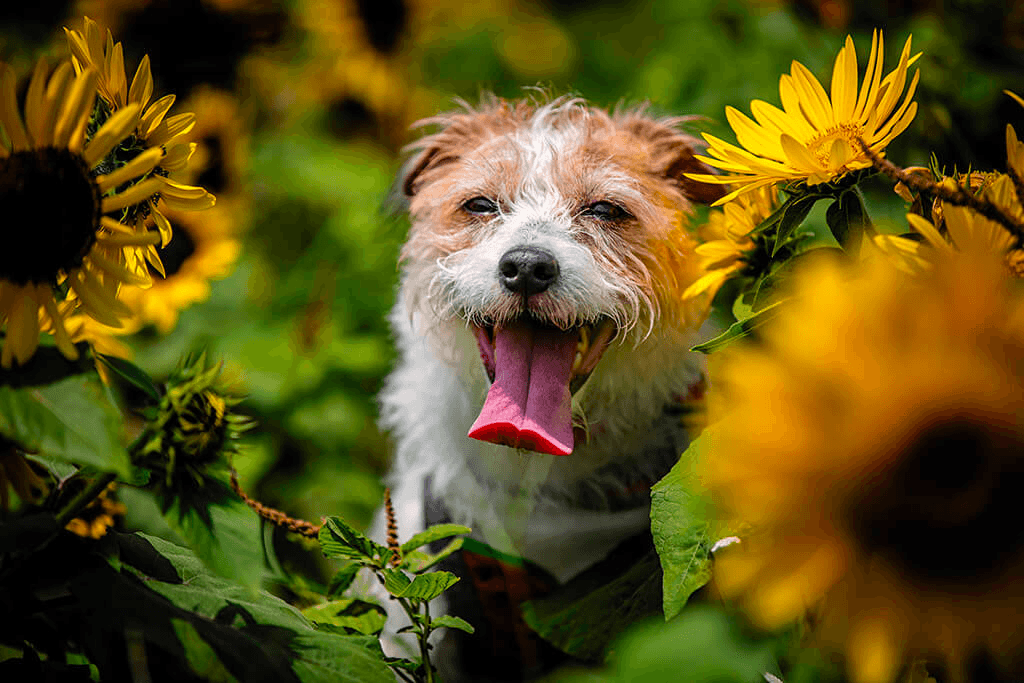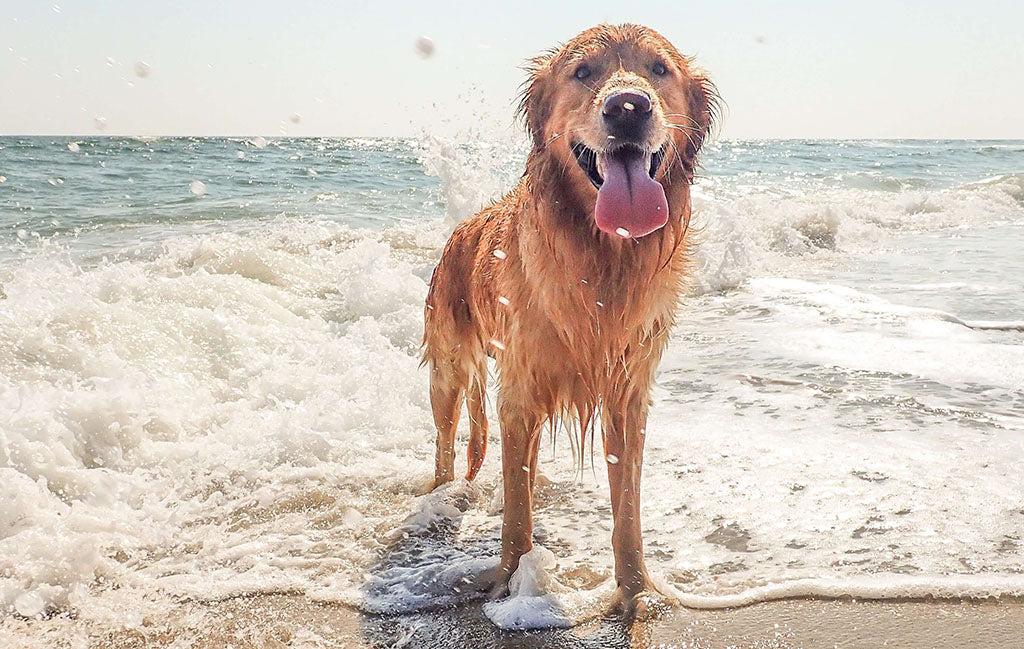Discover the common causes of dog itching and hair loss, along with effective solutions to help your furry friend feel better. Read more to find relief!
- Home/
- Dog/
- Health & Wellness/
- My Dog Is Itching & Losing Hair: Several Possible Causes
My Dog Is Itching & Losing Hair: Several Possible Causes

“My dog is itching and losing hair” is one of the top reasons pet parents visit the veterinarian. Millions of dogs are treated yearly for itchy skin through no fault. Veterinarians can treat any infection and try to determine the cause of the itch, but a diagnosis can be tricky.
Dogs with itchy skin are so prevalent that the month of August is devoted to Itchy Pet Awareness.
Even a little scratching can be a cry for help in dogs. Itchy skin can be caused by numerous things, including hair loss, excessive rolling, frequent licking, and skin changes.
When your dog isn’t itching, there can still be tell-tale signs that need attention. Pet parents should examine skin for redness, scabs, or circular skin patches. These can indicate irritation, hot spots, or fungal infection, such as ringworm. It becomes a vicious cycle when dogs scratch the affected areas, leading to open sores and infection.
Fortunately, there are actionable things pet parents can do to determine why their dog is itching so much. Here’s everything you need to know.
Why Is My Dog Itching & Losing Hair?
Here are some common reasons for itchiness and dog hair loss.
Parasites (Fleas, Mites, Mange)
One of the first things Dr. Daley checks when patients seek her help for hair loss, or itching is ectoparasites like fleas or ticks. She advises pet parents to check their dogs for fleas and ticks regularly. Parasites can also cause hair loss in dogs of all ages.
“Hair loss occurring in specific spots is called focal hair loss—multifocal if there is more than one spot,” says Krista Williams, BSc, DVM, CCRP. “Common causes of focal hair loss in puppies include fleas, mites, and other parasites.”
Sarcoptic mange, caused by a specific mite called Sarcoptes scabiei, manifests as extreme itching as the mites burrow into your dog’s skin and lay eggs.
On the other hand, demodectic mange is caused by Demodex mites that live naturally in your dog’s skin and hair follicles. Demodectic mange is usually less itchy but can cause redness, scaliness, and skin thickening as it progresses.
Ringworm
Tell-tale signs of ringworm, or dermatophytosis, include hair loss, scaly skin, circular patches of hair loss or bald patches (on the head, tail, or back), and redness.
Ringworm is a fungal infection that will not go away on its own. Your veterinarian will properly diagnose the condition and prescribe a treatment system, which often includes medicated shampoos, dips, or oral medications.
Ringworm differs from other skin issues because it is extremely contagious and can spread to other dogs, cats, and people.
Hormonal Imbalances
“Dogs can have endocrine disorders or autoimmune diseases that can cause itchiness and hair loss,” says Dr. Daley. “For middle-aged to older dogs, blood work can be helpful to look for thyroid disease or signs of Cushing’s disease.”
The three most common endocrine disorders that affect a dog’s skin include hypothyroidism (underactive), hyperadrenocorticism (Cushing’s), and also an all-inclusive condition called alopecia X.
A general veterinarian or a specialist treats these whole-body disorders. Dogs affected by a hormonal imbalance can cause hair loss, weight gain or loss, and secondary skin issues.
Infections (Bacterial or Yeast)
The cycle of skin issues, itching, and infection is common. When a dog’s skin is irritated, scratching and licking disrupt the skin’s protective barrier. As a result, bacteria or yeast can overgrow and cause inflammation and redness, which makes the dog even itchier.
A tell-tale sign of a yeast infection is an unpleasant odor associated with greasy skin and thick or discolored patches. Bacterial infections manifest with sores that may ooze and crusty pustules on the skin.
Medications and targeted therapies, such as medicated shampoos and oral treatment, are often prescribed to control infection. Understanding the source of the infection is paramount.
Diagnosing the Cause of Itching & Hair Loss in Dogs
As a veterinarian, Dr. Daley examines the dog and may include some, if not all, of the following to determine the cause and appropriate treatment:
- For a young puppy, a skin scraping may be performed to view cells under a microscope
- Prescribe flea and tick medications (i.e., Bravecto, Simparica, Nexgard) if the problem is fleas, ticks, or mites
- Skin cytology
- Fungal or bacterial cultures
- Skin biopsy
- Food trials (elimination diet)
- Allergy testing via blood sample
Pet parents should never guess what is causing their dog to itch, scratch, or experience hair loss. Dr. Daley warns pet parents to use caution when using topical steroids too frequently. She says overuse of steroids can induce Cushing’s disease in dogs.

Home Remedies for Dog Itching & Losing Hair
In addition to checking your dog for mites, fleas, or ticks that can be seen with the naked eye, there are home remedies for dog itching and hair loss. These are generally for management and symptom relief but not as cure-alls.
Oatmeal Baths
Pet parents may use oatmeal shampoo to soothe itching and irritated skin. Oatmeal has both moisturizing and anti-inflammatory properties. Follow the instructions on the bottle, as in most cases, the shampoo must remain on the skin for a short period before rinsing.
Coconut Oil
Some pet parents use coconut oil topically to alleviate dryness and itching and provide moisture to the skin. In other cases, coconut oil may be added to your dog’s diet because it is high in MCTs (medium-chain triglycerides), a type of fat. Always talk to your veterinarian before adding supplements to your dog’s diet.
Apple Cider Vinegar Rinse
Apple cider vinegar has antiseptic and antifungal properties, making it an ideal natural remedy. Some pet parents soak their dog’s irritated or yeasty paws in an apple cider vinegar rinse.
Dietary Changes
A veterinary dermatologist can often determine the cause of your dog’s itching or hair loss. They may perform blood testing, skin testing, or other tests.
An elimination dog is the gold standard for diagnosing food allergies or ingredient sensitivity. An elimination diet trial takes about eight to ten weeks. Your dog will only eat food recommended by your veterinarian or dermatologist. The goal is to find out if something your dog ate prior is the cause of symptoms.
Treatment Options for Itchy Skin Based on Diagnosis
Depending on the reason for your dog’s itchy skin or hair loss, a veterinarian may suggest some of the following:
Medications for Infections
Your veterinarian or veterinary dermatologist may prescribe or recommend antihistamines to control itch and inflammation, corticosteroids for more severe itching, topical treatments to soothe skin, antibiotics or antifungals, anti-parasitic medications, or immunosuppressive drugs to manage immune system response.
Antifungal Treatments
Antifungal treatments are used for dogs with fungal coats, ears, skin, or internal infections. They are often prescribed when fungi grow excessively and your dog’s system can’t fight them off naturally. The treatment relieves symptoms and prevents spread by eliminating further fungal growth.
Parasite Prevention and Eradication
If your dog is diagnosed with fleas, ticks, or mites, your veterinarian may recommend monthly treatments or oral medications to kill them and prevent further outbreaks. Since parasites can live in your home, you’ll want to treat bedding, carpeting, and common places your dog frequents to prevent re-infestation.
Dietary Change
If food is the cause of your dog’s itching and losing hair, your veterinarian may suggest a diet change. Some signs that diet is the cause of your dog’s itching include persistent scratching, redness, inflammation of the skin, recurrent ear infections, stomach upset (vomiting, diarrhea, loose stools), and hair loss or dandruff.
Behavioral Modification
Preventing future episodes of hair loss and itching can be achieved with a multifactorial approach that includes the following:
Regular Grooming
Brushing your dog regularly helps distribute oils in their skin and prevents matting, which can irritate the skin. If your dog requires professional grooming services, be sure to keep appointments.
Parasite Control
Using a hands-on approach, keep fleas, ticks, and mites away from your dog. Talk to your veterinarian about year-round preventatives while keeping your dog’s bedding, home, and outdoor spaces clean. Talk to a holistic veterinarian if you prefer a less chemically invasive approach. Some oils can make a dog very sick or worse.
Pro Tip: Learn how to remove a tick from your dog.
Feeding a Balanced Diet
While it sounds like common sense, feeding the right diet for your dog’s needs is essential. If sensitivities are suspected, avoid common allergens by feeding limited-ingredient dog food.
Maintaining a Healthy Home and Environment
Use air purifiers or humidifiers indoors, wash your dog’s paws after outdoor activity, and try to walk them in areas that won’t cause flare-ups. If your dog is allergic to things like pollen, dust, or mold, a veterinary dermatologist may recommend immunotherapy via drops or injections you can eventually do at home.
Monitoring Your Dog at Home
Keep an eye on your dog. Watch for excessive licking, rubbing against furniture, chewing, scratching, or scooting, which can all be signs of allergies or something else. Consider doggy clothes for indoor and outdoor use to keep airborne irritants at bay.
Routine Veterinary Check-Ups
There is no substitute for your veterinarian laying their hands on your dog and physically examining the skin. Take photos or videos of any signs or symptoms your dog experiences for your veterinarian to see.
Avoid Overbathing
Too much of a good thing can be harmful when it comes to overbathing. Follow veterinary orders regarding shampoos and bathing frequency. Too many baths can strip oil from a dog’s skin and cause irritation, dryness, and dandruff.
Control Stress Levels
Dogs exposed to domestic violence, arguing, stress, being alone frequently, etc., may exhibit signs of hair loss or itching. This is because the immune system is under attack. Provide a calm environment, and consider testing your dog’s cortisol levels.
Why Is My Dog Itching So Much?
As you can see, there are many reasons for dogs to itch or experience hair loss. The issues range from parasites to skin infections and stress. Understanding why your dog is itchy or losing hair is the first step to successfully addressing the problem.
It is important to provide treatments tailored to your dog’s needs. Your veterinarian or specialist can create a personalized plan to address the problem and prevent future flare-ups. Staying in touch with your veterinarian and using a journal can help.
Preventative care is the best approach whether your dog is itching or experiencing hair loss. With regular parasite prevention, carefully monitoring your dog’s skin, and feeding a well-balanced diet, you’ll have a good start to a healthy dog.
For chronic conditions or more advanced concerns, follow closely with your dog’s healthcare team for medications, treatments, and any new advancements in veterinary medicine.
Do you share life with an itchy dog or one who experiences hair loss? We welcome your feedback and stories in the comments below. Let us know what worked or didn’t work, as knowledge is power.
Sources
 C
C



